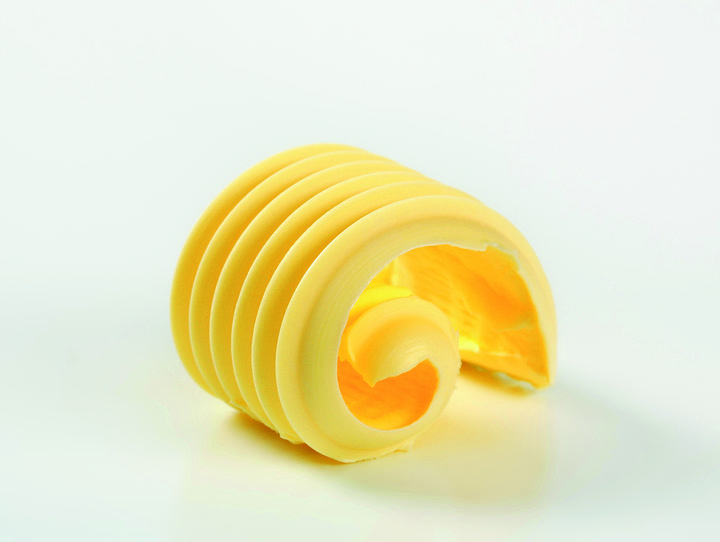“Butter” is defined by the first article of the December 20th 1988 decree. It is a designation legally protected in France and in the European Union. The designation “Butter” may only be used for water-in-dairy fat emulsion obtained by physical processes. All its ingredients are dairy-based. It is manufactured from pasteurized, frozen or deep-frozen cream. Butter must contain for 100 grams of finished product at least 82 grams of butyric fat, 2 grams of non-fat dry matter and maximum 16 grams of water (for unsalted butter).
Butter is produced through a phase inversion of an emulsion. The cream is indeed an emulsion of fat in water, as a result butter is an emulsion of water in fat.
- Traditional technique lactic butter:
- Long biological and physical maturing process for the cream after addition of lactic ferments.
- Constant churning (buttermaking machines or in churns).
- The main advantage of this technique is to improve organoleptic properties.
The drawback is a difficulty to use acid buttermilk and to control fat crystallisation.
- NIZO technique:
- Short physical maturing process without cream acidification.
- Ferments are added after churning directly in the butter.
- The advantage is a better parameter control especially crystallisation.
- The drawbacks are lower organoleptic qualities.
In continental Europe, we eat and use lactic butter (with an acid pH and a characteristic tangy taste). People from Great Britain usually prefer sweet cream butter (with a neutral pH and a creamy taste). The technique to obtain the latter is a physical maturation without addition of ferments .
Several types of butter may be manufactured thanks to these various techniques. The butters have then the following differences:
- Fat content:
- Lactic butter / sweet cream butter: 82% fat
- Lightened butter: between 60% and 62% fat, the cream is pasteurised beforehand
- Light butter or half butter: between 39% and 41% fat, the cream is pasteurised beforehand.
- Salt content:
- Salted butter: salt content is usually above 3%.
- Semi-salted butter: Salt content is usually between 0.8% and 3%.
- Manufacturing process:
- Churned butter
- NIZO butter
-
Quality designation:
One product may bear several designations, for instance a lightened butter may be salted.
Butter owes its excellent image to its exceptional tasting qualities and to its functional properties: good mouthfeel, texture and conservation.
- Mouthfeel comes from the ratio of solid and liquid fractions of butter according to the temperature.
- Texture: butter gives shortbread a typical friability. For sheeted or laminated dough (croissants, pain au chocolat), rheological qualities of butter allow a good development of the dough and high-quality pastry.
- Shelf life: Butter fat prevents water loss during cooking in the oven. It also slows down staling.
